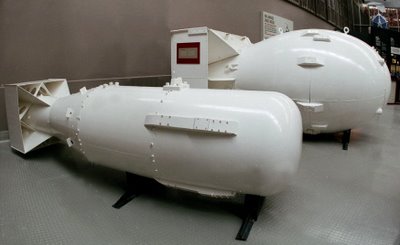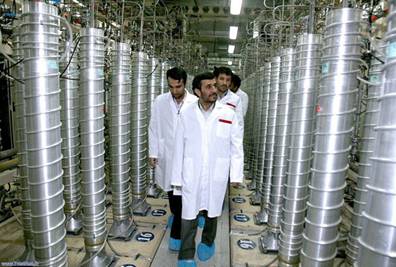Suicide is a major, preventable public health problem. In 2007, it was the tenth leading cause of death in the U.S., accounting for 34,598 deaths.1 The overall rate was 11.3 suicide deaths per 100,000 people.1 An estimated 11 attempted suicides occur per every suicide death.1
Suicidal behavior is complex. Some risk factors vary with age, gender, or ethnic group and may occur in combination or change over time.
If you are in a crisis and need help right away:
Call this toll-free number, available 24 hours a day, every day: 1-800-273-TALK (8255). You will reach the National Suicide Prevention Lifeline, a service available to anyone. You may call for yourself or for someone you care about. All calls are confidential.
What are the risk factors for suicide?
Research shows that risk factors for suicide include:
- depression and other mental disorders, or a substance-abuse disorder (often in combination with other mental disorders). More than 90 percent of people who die by suicide have these risk factors.2
- prior suicide attempt
- family history of mental disorder or substance abuse
- family history of suicide
- family violence, including physical or sexual abuse
- firearms in the home,3 the method used in more than half of suicides
- incarceration
- exposure to the suicidal behavior of others, such as family members, peers, or media figures.2
However, suicide and suicidal behavior are not normal responses to stress; many people have these risk factors, but are not suicidal. Research also shows that the risk for suicide is associated with changes in brain chemicals called neurotransmitters, including serotonin. Decreased levels of serotonin have been found in people with depression, impulsive disorders, and a history of suicide attempts, and in the brains of suicide victims. 4
Are women or men at higher risk?
- Suicide was the seventh leading cause of death for males and the fifteenth leading cause of death for females in 2007.1
- Almost four times as many males as females die by suicide.1
- Firearms, suffocation, and poison are by far the most common methods of suicide, overall. However, men and women differ in the method used, as shown below.1
| Suicide by: |
Males (%) |
Females (%) |
| Firearms |
56 |
30 |
| Suffocation |
24 |
21 |
| Poisoning |
13 |
40 |
Is suicide common among children and young people?
In 2007, suicide was the third leading cause of death for young people ages 15 to 24.1 Of every 100,000 young people in each age group, the following number died by suicide:1
- Children ages 10 to 14 — 0.9 per 100,000
- Adolescents ages 15 to 19 — 6.9 per 100,000
- Young adults ages 20 to 24 — 12.7 per 100,000
As in the general population, young people were much more likely to use firearms, suffocation, and poisoning than other methods of suicide, overall. However, while adolescents and young adults were more likely to use firearms than suffocation, children were dramatically more likely to use suffocation.1
There were also gender differences in suicide among young people, as follows:
- Nearly five times as many males as females ages 15 to 19 died by suicide.1
- Just under six times as many males as females ages 20 to 24 died by suicide.1
Are older adults at risk?
Older Americans are disproportionately likely to die by suicide.
- Of every 100,000 people ages 65 and older, 14.3 died by suicide in 2007. This figure is higher than the national average of 11.3 suicides per 100,000 people in the general population. 1
- Non-Hispanic white men age 85 or older had an even higher rate, with 47 suicide deaths per 100,000.1
Are Some Ethnic Groups or Races at Higher Risk?
Of every 100,000 people in each of the following ethnic/racial groups below, the following number died by suicide in 2007.1
- Highest rates:
- American Indian and Alaska Natives — 14.3 per 100,000
- Non-Hispanic Whites — 13.5 per 100,000
- Lowest rates:
- Hispanics — 6.0 per 100,000
- Non-Hispanic Blacks — 5.1 per 100,000
- Asian and Pacific Islanders — 6.2 per 100,000
What are some risk factors for nonfatal suicide attempts?
- As noted, an estimated 11 nonfatal suicide attempts occur per every suicide death. Men and the elderly are more likely to have fatal attempts than are women and youth.1
- Risk factors for nonfatal suicide attempts by adults include depression and other mental disorders, alcohol and other substance abuse and separation or divorce.5,6
- Risk factors for attempted suicide by youth include depression, alcohol or other drug-use disorder, physical or sexual abuse, and disruptive behavior.6,7
- Most suicide attempts are expressions of extreme distress, not harmless bids for attention. A person who appears suicidal should not be left alone and needs immediate mental-health treatment.
What can be done to prevent suicide?
Research helps determine which factors can be modified to help prevent suicide and which interventions are appropriate for specific groups of people. Before being put into practice, prevention programs should be tested through research to determine their safety and effectiveness.8 For example, because research has shown that mental and substance-abuse disorders are major risk factors for suicide, many programs also focus on treating these disorders as well as addressing suicide risk directly.
Studies showed that a type of psychotherapy called cognitive therapy reduced the rate of repeated suicide attempts by 50 percent during a year of follow-up. A previous suicide attempt is among the strongest predictors of subsequent suicide, and cognitive therapy helps suicide attempters consider alternative actions when thoughts of self-harm arise.9
Specific kinds of psychotherapy may be helpful for specific groups of people. For example, a treatment called dialectical behavior therapy reduced suicide attempts by half, compared with other kinds of therapy, in people with borderline personality disorder (a serious disorder of emotion regulation).10
The medication clozapine is approved by the Food and Drug Administration for suicide prevention in people with schizophrenia.11 Other promising medications and psychosocial treatments for suicidal people are being tested.
Since research shows that older adults and women who die by suicide are likely to have seen a primary care provider in the year before death, improving primary-care providers’ ability to recognize and treat risk factors may help prevent suicide among these groups.12 Improving outreach to men at risk is a major challenge in need of investigation.
from NIMH · Suicide in the U.S.: Statistics and Prevention –







